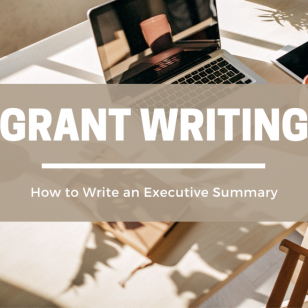By Craig Klose
Contributing Writer
The most important part of building relationships with potential grant funders is this: the interests and values of both organizations must align. A great grant-writing strategy (as we’ve said here a million times before) involves first finding funders that are likely to support your nonprofit mission.
If you get this right, everything else will follow naturally. Don’t try to force an awkward fit just because you heard that X funder happens to have a lot of money to give away. No matter how much money they have to burn, you’re not going to see a cent of it if they have no interest in what you do.
One caution: building an organizational alliance is something of a lost art in our internet age. Getting to a place where you have a good working relationship with someone is harder and more time-consuming than “liking” someone or something on Facebook. It’s more in-depth than looking through an IRS 990 and saying, “That’s the one.” A true relationship is built over time and through mutual respect and understanding.
So How Do You Build Relationships with Potential Grant Funders?
Grant proposals roll much more smoothly when a funder knows your organization well. It’s even easier when they’re expecting to see your proposal — or, better, working directly with you to build a competitive plan serving your complementary missions. And there are significant differences between what government agencies and private funders may expect.
Here’s how to build relationships to increase your odds of winning BIG funding:
Government Funders: Building Relationships Takes Time and Planning
Approach government funding relationships from both sides, so to speak. There’s the legislative end from the federal to the local levels — your congressman, senator, state and county representatives, and even local leaders. And there’s the fund administration end — the government agency making the grants.
Legislative Relationships
Let’s start with the legislative side. Have you met your elected official(s) personally? If not, what are you waiting for? In order to help you, they need to know who you are and what your organization does.
First, as always, check to see if you have any mutual acquaintances among your staff, board and/or volunteers, who would be willing to make a personal introduction or send a letter of introduction on your behalf. No? Call their office and arrange an appointment, but have a specific reason for the visit. You aren’t just coming to say hello. You would like to discuss the farm bill (or whatever legislative issue) and how it affects your organization. Bring a small token of your appreciation for their time. (But remember: too large or expensive a token is called a bribe. Bring a basket of your homemade cookies, or a jar of your board president’s famous blackberry jam.)
Make the most of the time you are allotted. It will be brief. Do your homework. What issues or challenges are front and center for the senator or congresswoman? Research them well enough to have an intelligent conversation.
How well do you know them on a personal level? Do they collect antique gas pumps? Brush up a little here, as well. If your Uncle Ted has a prized gas pump, bring along a photo of it to share with them. Make them see that you care enough about the visit to inform yourself broadly beforehand (or, just as good, that you are a naturally engaged and well-informed community member and that you thought about their interests as well as your own). After all, this is a classic transactional relationship. Show them how supporting your organization is good for the community and therefore good for them.
It’s a hard-and-fast rule that organizations – especially nonprofits and foundations – do not get political. Or religious. Vicki’s Republican Landscaping Services just sliced its potential audience in half; the same goes for Carl’s Cakes for Christ. You shouldn’t publicly support one party’s candidate over another. But let’s look a little closer. There’s a fine line between letting your stakeholders know your values and sending a message that you are prejudiced against other value sets.
Remember, an equally valid truth is that the personal is the political. Every individual has a set of personal values reflected in their political leanings. Of course, politicians will have fealty to their party’s platform, and they consider it their duty to make decisions that further the goals of that platform. You must master the fine art of playing politics without actually playing politics. It’s not a sin to acknowledge that individuals at your organization, as well as the public employees you contact in the grantor’s office, have specific political leanings. If your congressman is a Democrat but your issue or programs play more to the Republican platform, better to spend your time getting to know your Republican senator, if possible.
Let’s look at a few specific examples. Let’s say you are a not-for-profit regional arts council. It’s not a stretch to guess that a Democratic-leaning funder might be more sympathetic to government support of the arts than a Republican one, although that’s not always true. Perhaps a well-known local Republican official secures funding for your organization to construct a new facility (but in this example Democrats far outweigh Republicans among your staff). How do you handle the situation? First, make sure the gift does not come with stipulations you would be unwilling to honor (for instance adding the donors’ name to your location or using your headquarters for Republican fundraisers). Then thank them graciously and publicly for the generous gift and don’t miss a single opportunity to credit their support in the future.
For your grant-seeking organization, non-partisanship means you treat everyone the same. It doesn’t mean you don’t have political opinions, it means you don’t make decisions based on them.
Government Agency Relationships
What about the agencies from which you seek support? Whether they are federal, state, county or city level, there are also some common-sense rules of engagement. Again, do you have connections among your staff and board? But be careful here. It may be a conflict of interest if your office manager’s mother-in-law heads the agency. In this example, be proactive and bring this to the agency’s attention. It’s much better than them finding out later and feeling deceived.
If there are no connections within your organization that you can use, assign a specific person to make contact with based on a specific question. For instance, the 10-page narrative they want, is this up to 10 pages or around 10 pages? Contact the agency and ask who would address a question about writing your narrative. When you reach that person, use their time wisely but be prepared to draw them out a little if it sounds like they have time to talk. Have a few follow-up questions ready. (Helpful hint: make them open-ended, not simply meriting a yes or no answer.) For instance, “I’m working on the section about sustainability, and there are a couple different ways I can go. What would you advise?” This gets them talking and gives them a chance to share their wisdom about the process.
Listen carefully and take notes.
Now that you’ve had a good conversation, you may consider them your point-person at the agency and run all your questions by them. If not, they can always direct you to someone more fitting. Funders like grant seekers who ask questions. They’re usually happy for the conversation, and to learn just as much from you as you can from them. Most importantly, it shows them you are willing to do whatever it takes to build the strongest application possible.
This is what both of you want, after all.
Foundations, Private Funders & Corporations: Building Relationships that Last
Relationships with these types of funders will be more straightforward, but they still require time and nurturing. Start from the top: what is the fit between your mission and theirs? Keep in mind, corporations, foundations and individuals often have a broader range of interests and impact areas than most government funders.
In your grant research, you may encounter funders with lists of impact areas that seem to have no connecting principle or logical correlation (they may include areas like environmental stewardship, prison reform, business development and special-needs education). This simply means they have varied interests. As long as you fit with one of them, go for it! It might mean, however, that standing out from the competition will be harder.
Once again, go for a one-on-one relationship with a member of foundation staff, board of trustees or any other applicable contact person. Find your way in with a specific question and start building from there. Invite the funder to tour your facility or to participate in your community event. If they grant permission, add them to an email list for your monthly newsletter. Share press coverage aligning with your mutual interests. Get them thinking about you.
Smaller funding organizations may find it easier to develop a personal relationship with individual applicants and to become intimately invested with their success. That means your success!
As always, the more you let them help and guide you, the better your application will be. In turn, it will better your chances of being funded. The better your application is, the smaller the part chance plays in the outcome.
Find an Expert in Building Relationships with Potential Grant Funders
If your small nonprofit doesn’t have time or resources for building such relationships, there’s no shame in asking for help! Southern Tier Communications Strategies, LLC manages clients seeking grant funding by providing grant-writing and research services, as well as guiding the relationship-building process with likely funders. Contact Kelsey Boudin, STCS President and Founder, at ke****@************************es.com for more information.







